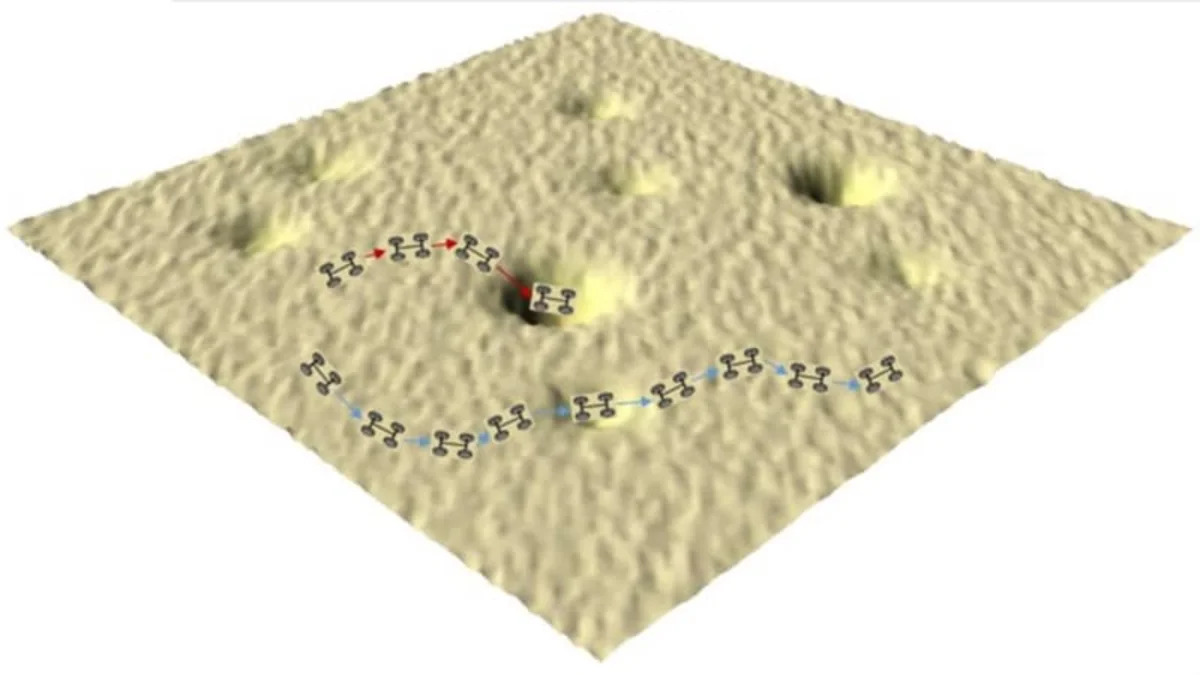Nanocars, those molecular-scale vehicles that might one day carry around tiny payloads, have been zipping around in vacuum environments for a while now. But one breakthrough the nanocar researchers at Rice University have been searching for is the ability to operate these nanomachines in ambient, open environments.
"That's when they will show potential to become useful tools for medicine and bottom-up manufacturing," Rice University chemist James Tour said in a press release. Rice's latest model of nanocar features adamantane wheels that are slightly hydrophobic, which allows them to move on the surface (in this case, glass slides) without becoming completely stuck. While actually "driving" a nanocar still hasn't become a reality, Tour said the nanocar test drive was meant to determine, "what makes a nanocar 'hit the brakes' and how much external energy we need to apply to start it moving again."
As it turns out, the open nanoroad for these nanocars is actually full of potholes and potential roadblocks. According to NC State analytical chemist Gufeng Wang, "molecules absorbed from air generate many potential energy wells, just like puddles on the potential energy surface." In other words, any little atom on the road could give you a flat tire when your car is a single molecule. Luckily for the world's first nanocar race, that vacuum-based event will have a lot fewer obstacles on the track.
Related Video:
This article by Andrew Dalton, originally ran on Engadget, the definitive guide to this connected life.


Sign in to post
Please sign in to leave a comment.
Continue